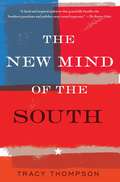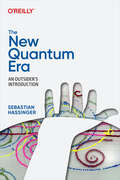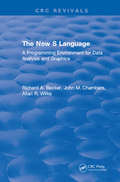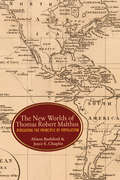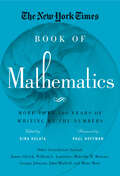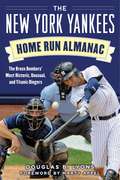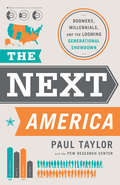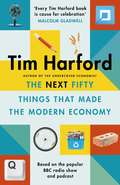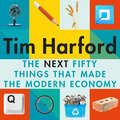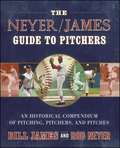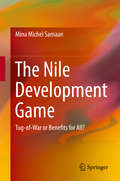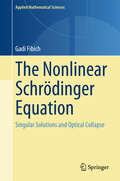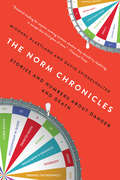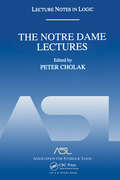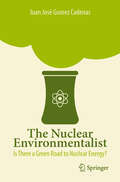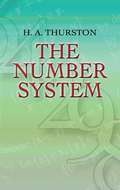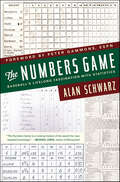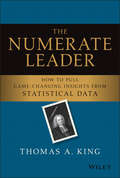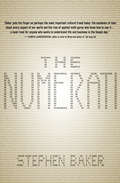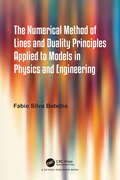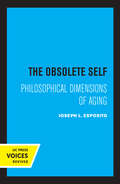- Table View
- List View
The New Mind of the South
by Tracy ThompsonThere are those who say the South has disappeared. But in her groundbreaking, thought-provoking exploration of the region, Tracy Thompson, a Georgia native and Pulitzer Prize finalist, asserts that it has merely drawn on its oldest tradition: an ability to adapt and transform itself. Thompson spent years traveling through the region and discovered a South both amazingly similar and radically different from the land she knew as a child. African Americans who left en masse for much of the twentieth century are returning in huge numbers, drawn back by a mix of ambition, family ties, and cultural memory. Though Southerners remain more churchgoing than other Americans, the evangelical Protestantism that defined Southern culture up through the 1960s has been torn by bitter ideological schisms. The new South is ahead of others in absorbing waves of Latino immigrants, in rediscovering its agrarian traditions, in seeking racial reconciliation, and in reinventing what it means to have roots in an increasingly rootless global culture. Drawing on mountains of data, interviews, and a whole new set of historic archives, Thompson upends stereotypes and fallacies to reveal the true heart of the South today--a region still misunderstood by outsiders and even by its own people. In that sense, she is honoring the tradition inaugurated by Wilbur Joseph Cash in 1941 in his classic, The Mind of the South. Cash's book was considered the virtual bible on the origins of Southern identity and its transformation through time. Thompson has written its sequel for the twenty-first century.
The New Quantum Era
by Sebastian HassingerQuantum computing and associated technologies and ideas seem to be everywhere today, even in blockbuster movies. As a field, quantum information science only goes back a few decades, but it's generating outsize excitement and investment in the 21st century. There's reason for the enthusiasm, but we're still a long way from being able to build and use these exotic machines.In this book, author Sebastian Hassinger guides you through the foundational ideas of quantum computing, providing insight into where it came from, what it is today, and what it may be in the future.Grounded in information science and quantum mechanics with straightforward explorations of the technology's crucial concepts and elements, this book demystifies the field and helps you develop your quantum intuition, making it easier to learn and use the technologies available on the cloud today.You'll learn:The origins of quantum information science, quantum physics, and relevant conceptsInformation science and the birth and evolution of the "classical" computer industryHow quantum concepts change information science and create new potential for computationThe current state of quantum computation hardware, error correction, and algorithmsQuantum computer hype: magical thinking and reasonable expectationsProblem-solving with quantum information science and quantum computation
The New S Language: A Programming Environment For Data Analysis And Graphics (Wadsworth And Brooks-cole Statistics-probability Ser.)
by R. BeckerThis book provides documentation for a new version of the S system released in 1988. The new S enhances the features that have made S popular: interactive computing, flexible graphics, data management and a large collection of functions. The new S features make possible new applications and higher-level programming, including a single unified language, user defined functions as first-class objects, symbolic computations, more accurate numerical calculations and a new approach to graphics. S now provides direct interfaces to the poowerful tool of the UNIX operating system and to algorithms implemented in Fortran and C.
The New Worlds of Thomas Robert Malthus: Rereading the "Principle of Population"
by Joyce E. Chaplin Alison BashfordThe New Worlds of Thomas Robert Malthus is a sweeping global and intellectual history that radically recasts our understanding of Malthus's Essay on the Principle of Population, the most famous book on population ever written or ever likely to be. Malthus's Essay is also persistently misunderstood. First published anonymously in 1798, the Essay systematically argues that population growth tends to outpace its means of subsistence unless kept in check by factors such as disease, famine, or war, or else by lowering the birth rate through such means as sexual abstinence.Challenging the widely held notion that Malthus's Essay was a product of the British and European context in which it was written, Alison Bashford and Joyce Chaplin demonstrate that it was the new world, as well as the old, that fundamentally shaped Malthus's ideas. They explore what the Atlantic and Pacific new worlds--from the Americas and the Caribbean to New Zealand and Tahiti--meant to Malthus, and how he treated them in his Essay. Bashford and Chaplin reveal how Malthus, long vilified as the scourge of the English poor, drew from his principle of population to conclude that the extermination of native populations by European settlers was unjust.Elegantly written and forcefully argued, The New Worlds of Thomas Robert Malthus relocates Malthus's Essay from the British economic and social context that has dominated its reputation to the colonial and global history that inspired its genesis.
The New York Times Book of Mathematics: More Than 100 Years of Writing by the Numbers
by Gina KolataFrom the archives of the worlds most famous newspaper comes a collection of its very best writing on mathematics. Big and informative, The New York Times Book of Mathematics gathers more than 110 articles written from 1892 to 2010 that cover statistics, coincidences, chaos theory, famous problems, cryptography, computers, and many other topics. Edited by Pulitzer Prize finalist and senior Times writer Gina Kolata, and featuring renowned contributors such as James Gleick, William L. Laurence, Malcolm W. Browne, George Johnson, and John Markoff, its a must-have for any math and science enthusiast!
The New York Yankees Home Run Almanac: The Bronx Bombers' Most Historic, Unusual, and Titanic Dingers
by Marty Appel Douglas B. LyonsThe New York Yankees don't call themselves the "Bronx Bombers" for nothing. And though Babe Ruth did not invent the home run, he did indeed popularize it and make it seem less vulgar. New York Yankees Home Run Almanac presents a month-by-month tally of historic, important, unusual, or titanic home runs, hit mostly by Yankees (or players who hit them at Yankees ballparks). It covers everyone from Ruth to Mickey Mantle, Alex Rodriguez, Joe DiMaggio, Lou Gehrig, Reggie Jackson, Derek Jeter, Aaron Judge, and many more pinstripe players, past and present, in an easy-to-read format. Some of the many dingers featured include: Graig Nettles's home run on Opening Day 1974, when the Yankees called Shea Stadium home Jorge Posada's and Bernie Williams's switch-hit home runs during the same game in 2000 Pitcher Whitey Ford's third and final home run of his career Aaron Judge's 50th home run of the season, a rookie record And many more!
The Next America
by Pew Research Center Paul TaylorThe America of the near future will look nothing like the America of the recent past.America is in the throes of a demographic overhaul. Huge generation gaps have opened up in our political and social values, our economic well-being, our family structure, our racial and ethnic identity, our gender norms, our religious affiliation, and our technology use.Today's Millennials-well-educated, tech savvy, underemployed twenty-somethings-are at risk of becoming the first generation in American history to have a lower standard of living than their parents. Meantime, more than 10,000 Baby Boomers are retiring every single day, most of them not as well prepared financially as they'd hoped. This graying of our population has helped polarize our politics, put stresses on our social safety net, and presented our elected leaders with a daunting challenge: How to keep faith with the old without bankrupting the young and starving the future.Every aspect of our demography is being fundamentally transformed. By mid-century, the population of the United States will be majority non-white and our median age will edge above 40-both unprecedented milestones. But other rapidly-aging economic powers like China, Germany, and Japan will have populations that are much older. With our heavy immigration flows, the US is poised to remain relatively young. If we can get our spending priorities and generational equities in order, we can keep our economy second to none. But doing so means we have to rebalance the social compact that binds young and old. In tomorrow's world, yesterday's math will not add up.Drawing on Pew Research Center's extensive archive of public opinion surveys and demographic data, The Next America is a rich portrait of where we are as a nation and where we're headed-toward a future marked by the most striking social, racial, and economic shifts the country has seen in a century.
The Next America
by Paul TaylorThe America of the near future will look nothing like the America of the recent past. America is in the throes of a demographic overhaul. Huge generation gaps have opened up in our political and social values, our economic well-being, our family structure, our racial and ethnic identity, our gender norms, our religious affiliation, and our technology use. Today’s Millennials-well-educated, tech savvy, underemployed twenty-somethings-are at risk of becoming the first generation in American history to have a lower standard of living than their parents. Meantime, more than 10,000 Baby Boomers are retiring every single day, most of them not as well prepared financially as they’d hoped. This graying of our population has helped polarize our politics, put stresses on our social safety net, and presented our elected leaders with a daunting challenge: How to keep faith with the old without bankrupting the young and starving the future. Every aspect of our demography is being fundamentally transformed. By mid-century, the population of the United States will be majority non-white and our median age will edge above 40-both unprecedented milestones. But other rapidly-aging economic powers like China, Germany, and Japan will have populations that are much older. With our heavy immigration flows, the US is poised to remain relatively young. If we can get our spending priorities and generational equities in order, we can keep our economy second to none. But doing so means we have to rebalance the social compact that binds young and old. In tomorrow’s world, yesterday’s math will not add up. Drawing on Pew Research Center’s extensive archive of public opinion surveys and demographic data, The Next America is a rich portrait of where we are as a nation and where we’re headed-toward a future marked by the most striking social, racial, and economic shifts the country has seen in a century.
The Next Fifty Things that Made the Modern Economy
by Tim Harford'Endlessly insightful and full of surprises - exactly what you would expect from Tim Harford' BILL BRYSON'Entertaining . . . A lively introduction to some of the most ingenious, yet often overlooked inventions that have changed the way we live' The Times'Every Tim Harford book is cause for celebration' MALCOLM GLADWELL'Harford is a fine, perceptive writer, and an effortless explainer of tricky concepts. His book teems with good things, and will expand the mind of anyone lucky enough to read it' Daily MailIn Fifty Things that Made the Modern Economy, the revolutionary, acclaimed book, radio series and podcast, bestselling economist Tim Harford introduced us to a selection of fifty radical inventions that changed the world.Now, in this new book, Harford once again brings us an array of remarkable, memorable, curious and often unexpected 'things' - inventions that teach us lessons by turns intimate and sweeping about the complex world economy we live in today.From the brick, blockchain and the bicycle to fire, the factory and fundraising, and from solar PV and the pencil to the postage stamp, this brilliant and enlightening collection resonates, fascinates and stimulates. It is a wonderful blend of insight and inspiration from one of Britain's finest non-fiction storytellers.
The Next Fifty Things that Made the Modern Economy
by Tim Harford'Endlessly insightful and full of surprises - exactly what you would expect from Tim Harford' BILL BRYSON'Entertaining . . . A lively introduction to some of the most ingenious, yet often overlooked inventions that have changed the way we live' The Times'Every Tim Harford book is cause for celebration' MALCOLM GLADWELL'Harford is a fine, perceptive writer, and an effortless explainer of tricky concepts. His book teems with good things, and will expand the mind of anyone lucky enough to read it' Daily MailIn Fifty Things that Made the Modern Economy, the revolutionary, acclaimed book, radio series and podcast, bestselling economist Tim Harford introduced us to a selection of fifty radical inventions that changed the world.Now, in this new book, Harford once again brings us an array of remarkable, memorable, curious and often unexpected 'things' - inventions that teach us lessons by turns intimate and sweeping about the complex world economy we live in today.From the brick, blockchain and the bicycle to fire, the factory and fundraising, and from solar PV and the pencil to the postage stamp, this brilliant and enlightening collection resonates, fascinates and stimulates. It is a wonderful blend of insight and inspiration from one of Britain's finest non-fiction storytellers.
The Neyer/James Guide to Pitchers: An Historical Compendium of Pitching, Pitchers, and Pitches
by Rob Neyer Bill JamesPreeminent baseball analyst Bill James and ESPN.com baseball columnist Rob Neyer compile information on pitches and their origins, nearly two thousand pitchers, and more in this comprehensive guide.Pitchers, the pitches they throw, and how they throw them—they&’re the stuff of constant scrutiny, but there's never been anything like a comprehensive source for such information…until now. Bill James and Rob Neyer spent over a decade compiling the centerpiece of this book, the Pitcher Census, which lists specific information for nearly two thousand pitchers, ranging throughout the history of professional baseball. Their guide also includes a dictionary describing virtually every known pitch, biographies of great pitchers who have been overlooked, and top ten lists for fastballs, spitballs, and everything in between. James and Neyer also weigh in on the debate over pitcher abuse and durability, offer a formula for predicting the Cy Young Award winner, and reveal James&’s Pitcher Codes. Learn about the origins and development of baseball&’s most important pitches and more knuckleballers and submariners than you ever thought existed! Baseball&’s action always starts with the pitchers. Begin to understand them and join in on entertaining debates while having a great deal of fun with the history of the game that captivates so many with this one-of-a-kind guide.
The Nile Development Game: Tug-of-War or Benefits for All?
by Mina Michel SamaanThis book introduces an analytic framework constructed upon the iterated Prisoners' Dilemma game to model and analyze transboundary water interactions along the Nile River. It presents a thorough and in-depth analysis of the historical path through which conflict and cooperation have been generated among the Nile riparians over large-scale developmental schemes. This is done through modeling water interactions in the basin as an iterated Prisoners' Dilemma game and employing process-tracing method to compare four distinguishable rounds of the game: the colonial round, the Cold War round, the post-Cold War round, and the post-2011 round. The book examines the influences of the changing political contexts at the domestic, regional, and global levels on the game outcomes. This framework is initially applied on several cases of international rivers worldwide, while the rest of the book is devoted to the Nile case. The book's central argument is that the riparians' interests, capabilities, and beliefs are heterogeneous in varying degrees and that the changing multilevel political contexts influence the level of such heterogeneities among the riparians, which ultimately drive the equilibrium dynamics in the Nile game to generate different conflictive and cooperative outcomes over time. Although the book's main conclusion indicates that the absence of economic interdependence and regional integration will transfer the game into tug-of-war, which will impose harsh punishment on the basin communities and ecosystems on the long term, the final chapter lists a group of recommendations addressed to the riparian states and international donors, exploring the way for boosting cooperation and preventing conflicts in the basin. Presenting clear theoretical, methodological, and policy implications, this book is appropriate for students and scholars of international relations, hydrology, and development studies.
The Nonlinear Schrödinger Equation
by Gadi FibichThis book is an interdisciplinary introduction to optical collapse of laser beams, which is modelled by singular (blow-up) solutions of the nonlinear Schrödinger equation. With great care and detail, it develops the subject including the mathematical and physical background and the history of the subject. It combines rigorous analysis, asymptotic analysis, informal arguments, numerical simulations, physical modelling, and physical experiments. It repeatedly emphasizes the relations between these approaches, and the intuition behind the results. The Nonlinear Schrödinger Equation will be useful to graduate students and researchers in applied mathematics who are interested in singular solutions of partial differential equations, nonlinear optics and nonlinear waves, and to graduate students and researchers in physics and engineering who are interested in nonlinear optics and Bose-Einstein condensates. It can be used for courses on partial differential equations, nonlinear waves, and nonlinear optics. Gadi Fibich is a Professor of Applied Mathematics at Tel Aviv University. "This book provides a clear presentation of the nonlinear Schrodinger equation and its applications from various perspectives (rigorous analysis, informal analysis, and physics). It will be extremely useful for students and researchers who enter this field. " Frank Merle, Université de Cergy-Pontoise and Institut des Hautes Études Scientifiques, France
The Norm Chronicles: Stories and Numbers About Danger and Death
by Michael Blastland David SpiegelhalterA statistician and a journalist reveal the real story behind the statistics on risk, chance, and choice
The Notre Dame Lectures: Lecture Notes in Logic, 18
by Peter CholakIn fall 2000, the Notre Dame logic community hosted Greg Hjorth, Rodney G. Downey, Zoe Chatzidakis, and Paola D'Aquino as visiting lecturers. Each of them presented a month long series of expository lectures at the graduate level. The articles in this volume are refinements of these excellent lectures.
The Nuclear Environmentalist
by Juan José Gomez CadenasThis book explains how society will face an energy crisis in the coming decades owing to increasing scarcity of fossil fuels and climate change impacts. It carefully explores this coming crisis and concisely examines all of the major technologies related to energy production (fossil fuels, renewables, and nuclear) and their impacts on our society and environment. The author argues that it is wrong to pit alternatives to fossil fuels against each other and proposes that nuclear energy, although by no means free of problems, can be a viable source of reliable and carbon-free electricity. He concludes by calling for a diversified and rational mix of electricity generation in order to mitigate the effects of the energy crisis. Throughout, the book is spiced with science, history, and anecdotes in a way that ensures rewarding reading without loss of rigor.
The Number System
by H. A. ThurstonThe teaching of mathematics has undergone extensive changes in approach, with a shift in emphasis from rote memorization to acquiring an understanding of the logical foundations and methodology of problem solving. This book offers guidance in that direction, exploring arithmetic's underlying concepts and their logical development.This volume's great merit lies in its wealth of explanatory material, designed to promote an informal and intuitive understanding of the rigorous logical approach to the number system. The first part explains and comments on axioms and definitions, making their subsequent treatment more coherent. The second part presents a detailed, systematic construction of the number systems of rational, real, and complex numbers. It covers whole numbers, hemigroups and groups, integers, ordered fields, the order relation for rationals, exponentiation, and real and complex numbers. Every step is justified by a reference to the appropriate theorem or lemma. Exercises following each chapter in Part II help readers test their progress and provide practice in using the relevant concepts.
The Numbers Behind NUMB3RS
by Keith Devlin Gary LordenThe companion to the hit CBS crime series Numb3rs presents the fascinating way mathematics is used to fight real-life crime Using the popular CBS prime-time TV crime series Numb3rs as a springboard, Keith Devlin (known to millions of NPR listeners as ?the Math Guy? on NPR?s Weekend Edition with Scott Simon) and Gary Lorden (the principal math advisor to Numb3rs) explain real-life mathematical techniques used by the FBI and other law enforcement agencies to catch and convict criminals. From forensics to counterterrorism, the Riemann hypothesis to image enhancement, solving murders to beating casinos, Devlin and Lorden present compelling cases that illustrate how advanced mathematics can be used in state-of-the-art criminal investigations.
The Numbers Behind Numb3rs
by Keith Devlin Gary LordenThe companion to the hit CBS crime series Numb3rs presents the fascinating way mathematics is used to fight real-life crime Using the popular CBS prime-time TV crime series Numb3rs as a springboard, Keith Devlin (known to millions of NPR listeners as ?the Math Guy? on NPR?s Weekend Edition with Scott Simon) and Gary Lorden (the principal math advisor to Numb3rs) explain real-life mathematical techniques used by the FBI and other law enforcement agencies to catch and convict criminals. From forensics to counterterrorism, the Riemann hypothesis to image enhancement, solving murders to beating casinos, Devlin and Lorden present compelling cases that illustrate how advanced mathematics can be used in state-of-the-art criminal investigations. .
The Numbers Game
by Michael Blastland Andrew DilnotThe Strunk and White of statistics team up to help the average person navigate the numbers in the news Drawing on their hugely popular BBC Radio 4 show More or Less, journalist Michael Blastland and internationally known economist Andrew Dilnot delight, amuse, and convert American mathphobes by showing how our everyday experiences make sense of numbers. The radical premise of The Numbers Game is to show how much we already know and give practical ways to use our knowledge to become cannier consumers of the media. If you've ever wondered what "average" really means, whether the scare stories about cancer risk should convince you to change your behavior, or whether a story you read in the paper is biased (and how), you need this book. Blastland and Dilnot show how to survive and thrive on the torrent of numbers that pours through everyday life.
The Numbers Game: Baseball's Lifelong Fascination with Statistics
by Alan SchwarzThe Numbers Game is the first-ever history of baseball statistics - the keeping of them, the study of them, the people who devised them, the cultural phenomenon of them, from 1845 until today.Most baseball fans, players and even team executives assume that the National Pastime's infatuation with statistics is simply a byproduct of the information age, a phenomenon that blossomed only after the arrival of Bill James and computers in the 1980s. They couldn't be more wrong.In this unprecedented new book, Alan Schwarz - whom bestselling Moneyball author Michael Lewis calls "one of today's best baseball journalists" - provides the first-ever history of baseball statistics, showing how baseball and its numbers have been inseparable ever since the pastime's birth in 1845. He tells the history of this obsession through the lives of the people who felt it most: Henry Chadwick, the 19th-century writer who invented the first box score and harped endlessly about which statistics mattered and which did not; Allan Roth, Branch Rickey's right-hand numbers man with the late-1940s Brooklyn Dodgers; Earnshaw Cook, a scientist and Manhattan Project veteran who retired to pursue inventing the perfect baseball statistic; John Dewan, a former Strat-O-Matic maven who built STATS Inc. into a multimillion-dollar powerhouse for statistics over the Internet; and dozens more.Almost every baseball fan for 150 years has been drawn to the game by its statistics, whether through newspaper box scores, the backs of Topps baseball cards, The Baseball Encyclopedia, or fantasy leagues. Today's most ardent stat scientists, known as "sabermetricians," spend hundreds of hours coming up with new ways to capture the game in numbers, and engage in holy wars over which statistics are best. Some of these men--and women --are even being hired by major league teams to bring an understanding of statistics to a sport that for so long shunned it.Taken together, Schwarz paints a history not just of baseball statistics, but of the soul of the sport itself. The Numbers Game will be an invaluable part of any fan's library and go down as one of the sport's classic books.
The Numerate Leader: How to Pull Game-Changing Insights from Statistical Data
by Thomas A. KingLearn how to make informed decisions through statistical reasoning! Using a qualitative approach to introduce statistical reasoning, The Numerate Leader: How to Pull Game-Changing Insights from Statistical Data is a cutting-edge book that helps the reader extract information from unfamiliar data sets. Combining introductory statistics with a few ideas from the philosophy of science, this work helps generalists find patterns that may be expected to recur in the future. Identifying one or two such relationships can be a game-changer for the reader and their employer or client. Thomas A. King's revelatory writing is easy to understand and conversational in tone. King makes the complex, tedious topics that you studied in the classroom—but likely didn't yet understand—easily comprehensible. Historical examples and humorous anecdotes illuminate technical concepts so that readers may pull insights from data sets and then explain conclusions reached through effective storytelling. What's more, the book is fun to read. A natural teacher, King emphasizes that complex software is unnecessary for success in this field. Readers, however, will find: Real-life examples that help put statistical concepts into an understandable context A glossary of important statistical terms and their use An appendix detailing ten math facts numerate people should know Perfect for undergraduate and graduate students entering advanced data analytics courses, as well as data analysts and c-suite executives just starting out, The Numerate Leader is key in helping develop the skills to identify provisional relationships between disparate data sets and then assess the significance of conclusions reached.
The Numerati: How They'll Get My Number And Yours
by Stephen BakerLearn how the crisis over digital privacy and manipulation evolved in this &“utterly fascinating&” look at the growth of data mining and analysis (Seattle Post-Intelligencer). Award-winning journalist Stephen Baker traces the rise of the &“global math elite&”: computer scientists who invent ways to not only record our behavior, but also to predict and alter it. Nowadays, we don&’t need to be online to create a digital trail; we do it simply by driving through an automated tollbooth or shopping with a credit card. As massive amounts of information are collected, sifted, and analyzed, we all become targets of those who want to influence everything from what we buy to how we vote. Clear and &“highly readable,&” The Numerati is a look at the origins of our present-day world, the possibilities of the future, and those who—whether with good or bad intentions—profile us as workers, consumers, citizens, or potential terrorists (The Wall Street Journal).
The Numerical Method of Lines and Duality Principles Applied to Models in Physics and Engineering
by Fabio Silva BotelhoThe book includes theoretical and applied results of a generalization of the numerical method of lines. A Ginzburg-Landau type equation comprises the initial application, with detailed explanations about the establishment of the general line expressions. Approximate numerical procedures have been developed for a variety of equation types, including the related algorithms and software. The applications include the Ginzburg-Landau system in superconductivity, applications to the Navier-Stokes system in fluid mechanics and, among others, models in flight mechanics. In its second and final parts, the book develops duality principles and numerical results for other similar and related models. The book is meant for applied mathematicians, physicists and engineers interested in numerical methods and concerning duality theory. It is expected the text will serve as a valuable auxiliary project tool for some important engineering and physics fields of research.
The Obsolete Self: Philosophical Dimensions of Aging
by Joseph EspositoThis title is part of UC Press's Voices Revived program, which commemorates University of California Press’s mission to seek out and cultivate the brightest minds and give them voice, reach, and impact. Drawing on a backlist dating to 1893, Voices Revived makes high-quality, peer-reviewed scholarship accessible once again using print-on-demand technology. This title was originally published in 1987.
